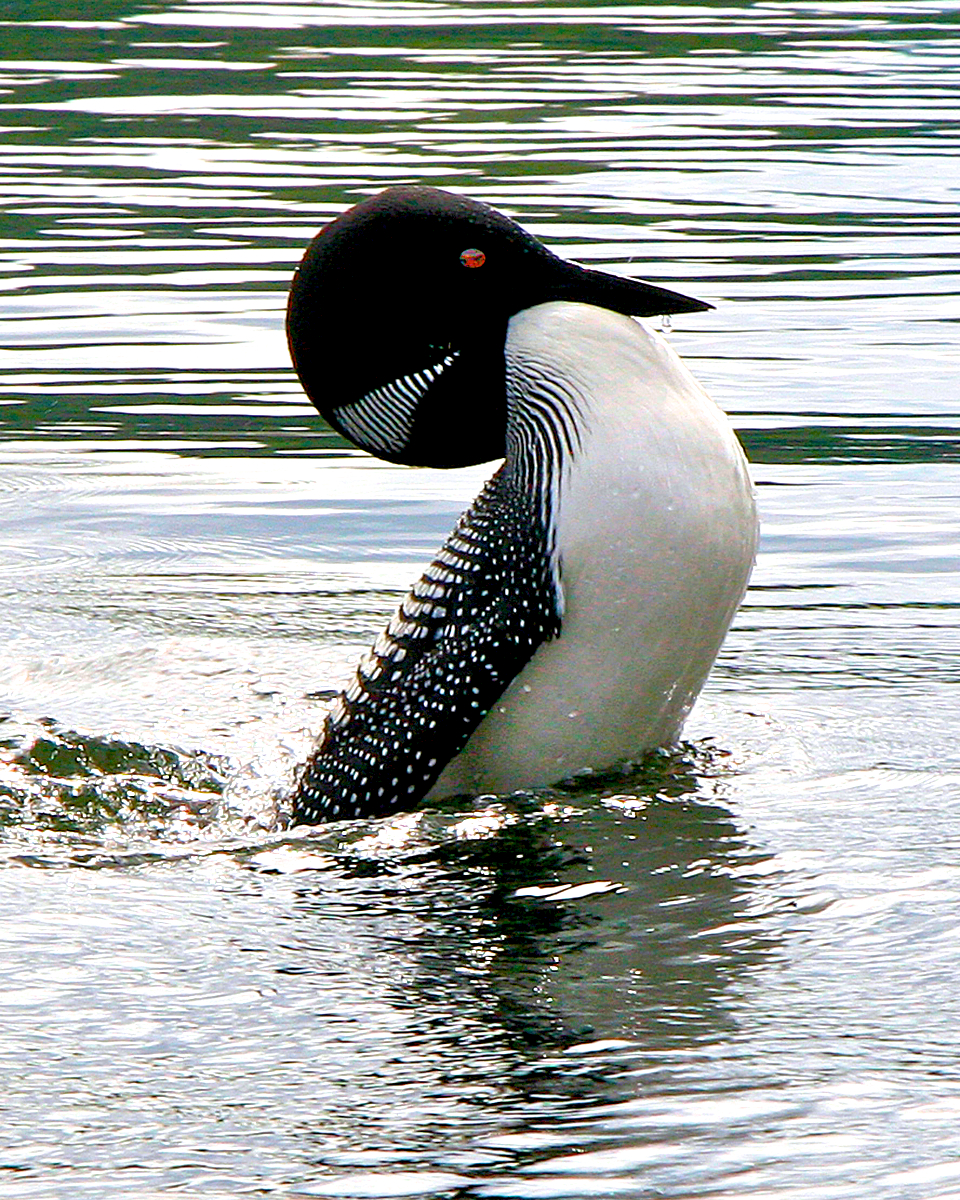Common Loon

Killarney Provincial Park, Central Ontario. It turns out to my delight that many loons are not only populating one of the brilliant lakes in Killarney Park, but they are nesting. We paddle our canoe quietly and carefully as close as we dare without disturbing the nest sites along the shoreline where we see nesting loons with large, speckled eggs. It’s really quite wonderful to slip into the secret world of loons on a remote and cold, beautiful northern lake.
Hatchlings leave their nest after only one day, and soon they learn to swim along side two devoted parents. For security, the hatchlings often nestle on the back of a swimming parent loon. The song of the loons in the very early morning or at dusk echo their mournful calls to their mates and can be heard from great distances. Once heard, it is a sound that the human will forever remember.
Pairs aggressively defend their territories. Though we are careful not to disturb the loons, we nonetheless upset the one shown here who is putting on quite the display in warning for us to stay away. Loons can dive more than 200 feet below the surface of the water in search of food because, unlike other birds, their bones are solid, not hollow, adding the needed weight to their bodies which allows them to dive so deeply. It is fun just to watch them dive again and again to bring up small fish or other morsel to feed their mate and young.
*****
The Common Loon (Gavia immer) is also known as The Great Northern Loon and is the Minnesota State Bird. Loons have black heads and necks with white striping and striking red eyes, along with checkering and spotting on their backs. They grow up to three feet in length and weigh up to 12 pounds, feeding largely on fish and invertebrates. Their predators are diverse and can strike from all directions as they include birds like gulls, ravens, and crows, fish such as pike, and land mammals such as raccoons, weasels, and skunks. They nest lakeside and incubate their eggs for 27 to 30 days. Hatchlings are able to fly in about 11 weeks, and their average lifespan in the wild is 30 years. There are many Native American legends about common loons; and to this day the Inuit legally hunt over 4,500 a year for subsistence. Loon populations are currently stable, but a number of threats loom, including human encroachment and pollution.
